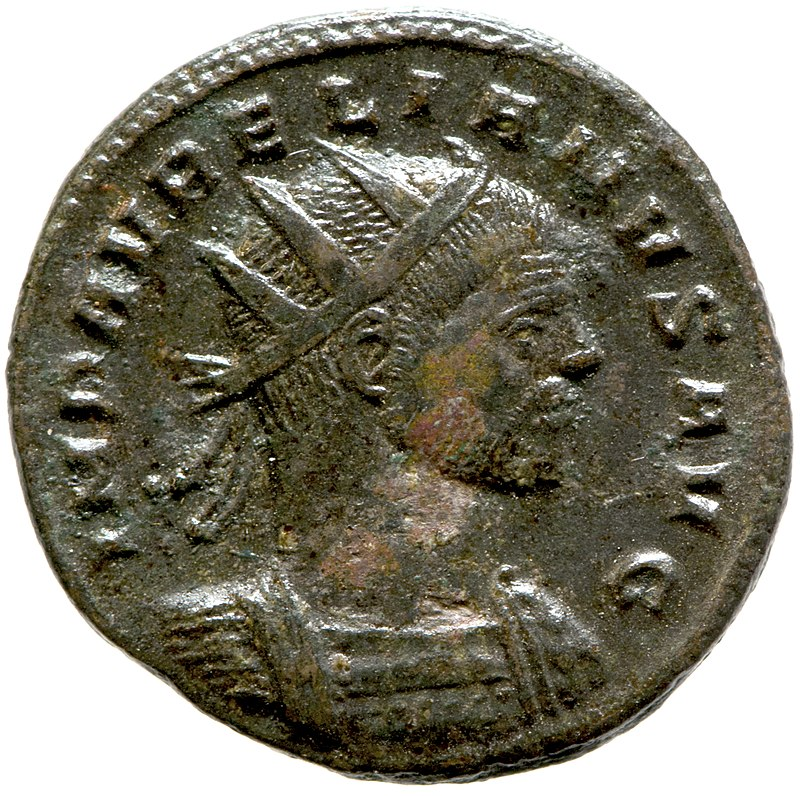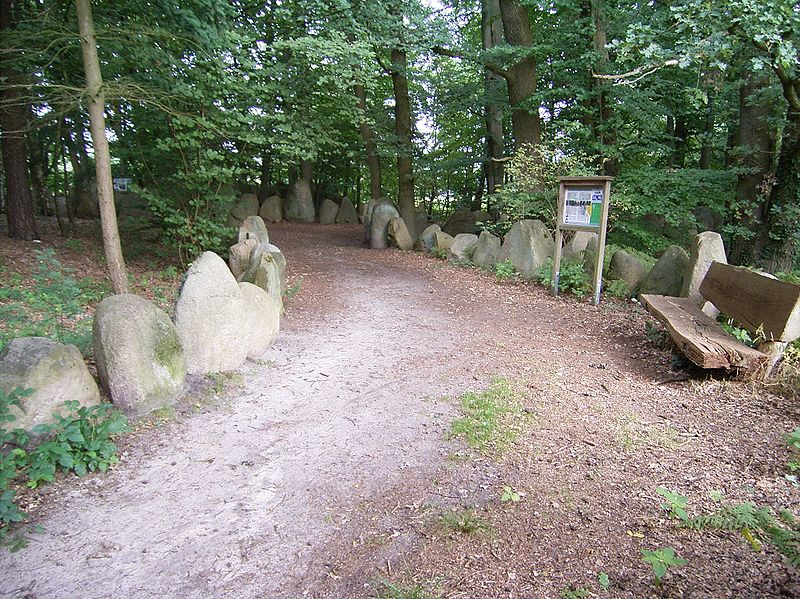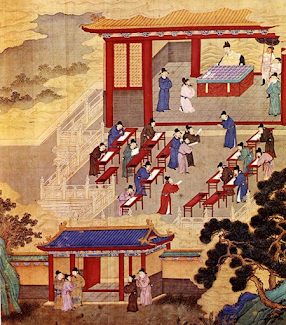Reason One: the Carolingian achievement is a compelling historical problem
This one needs a little unpacking. Put it simply, in the eighth century, three Carolingian rulers, Charles Martel, Pippin the Short and Charlemagne, working in succession, were able to create the largest state that Western Europe had ever known since the days of the ancient Roman Empire. Charlemagne's son, Louis the Pious, then held it all together for another generation. And even though it fractured into three kingdoms and soon more after Louis' death, his successors were able to almost succeed in pasting it all back to together until the last of Louis' grandsons, Charles the Fat, died in 888 without an heir. After that point, no continuous territorial state on the scale of the Carolingian Empire would be seen again until the very short-lived empires of Napoleon and Hitler.
The question this necessitates is why one family (the Carolingians) were able to gain uncontested political authority over such a large area of mainland Europe for as long as they did? How did they manage that without a tax system, a large professional civil service, standing armies and speedy communications? Yet manage they did. And by exploring how they did it, one is able to gain a lot of insight into how power and authority work, especially in a premodern setting but also beyond it.
Reason Two: nations and Europe
On the Continent, the Carolingians appear quite differently depending on who you speak to. The French and Germans have traditionally argued over who can claim ownership of Charlemagne as a national hero. Late medieval artists found a sort of compromise there by showing him with both the Fleur de Lys of France and the German imperial eagle.
 |
| As exemplified here in this panel painting in Aachen from 1470. Photo credit: yours truly |
Of course, lets not forget that Charlemagne, and his father Pippin the Short, grandfather Charles Martel and great-grandfather Pippin of Herstal, were actually born in the Liege area of what is now Belgium. This adds an interesting spin for the old British joke about how its impossible to name five famous Belgians. And certainly the Carolingian past does matter to the Belgians too - a lot of the leading scholars of this period from the late nineteenth century up until the 1970s were Belgians, or else French, Germans and Austrians. But interestingly, roughly since the UK joined the EU in 1973, they've become increasingly superseded by the British and the Americans, and the most cutting edge Carolingianist scholarship in the twenty-first century tends to come from universities in the UK and the US.
The Carolingian age is also often seen as the starting point for France and Germany. There's of course the famous (or infamous) Treaty of Verdun in August 843, which divided the Carolingian Empire between the three sons of Louis the Pious into West Francia (roughly corresponding to modern France), East Francia (roughly corresponding to Germany) and Lotharingia (corresponding to no currently existing European state). As subsequent events were to avail themselves, Lotharingia did not emerge into the next century as an independent sovereign kingdom and its former territories now belong to 8 different modern European nation states. By contrast West and East Francia did, and over the next millennium they would evolve into the modern nation states of France and Germany that we know and love (or loathe depending on who you ask). And in the meantime, the descendants of the ninth century West and East Franks would fight several wars between 938 and 1945 to claim different bits of what had been Lotharingia as their rightful territory.
But really its not as simple as being able to say that the struggles between rival Carolingian kings created France and Germany, made Belgium the cockpit of Europe and were an ultra-long-term cause of WW1. History didn't inevitably have to turn out this way. If King Lothar II of Lotharingia or Emperor Charles the Fat hadn't died without legitimate male heirs in 869 and 888 respectively, then everything could have turned out very differently. And after the Carolingians were gone, there were many moments where Western European history could have taken a very different turn. To give some underappreciated examples, if Duke Charles the Bold of Burgundy had not been killed at the battle of Nancy on 5th January 1477, then a powerful Middle kingdom could have re-emerged in between France and Germany. Or if Queen Mary I of England had produced a child from her marriage Philip II of Spain in 1554, then Belgium and the Netherlands would be under English/ British control and the balance of power in Western Europe that successive pan-European conflicts between 1688 and 1918 were fought to protect simply would not have existed.
Instead, I think the Carolingians serve to remind us that there is nothing natural or inevitable about the nations of France and Germany or the current Western European state-system. Instead they enable us to see a very different political set-up in Western Europe in action, and contemplate many different possibilities for where Western European history could have gone. This is one of the reasons why I think history is such a useful subject. It exists not just to show how the present state of affairs came to be, but also how the present state of affairs hasn't always been the case and how it could be very different. History is in no way a subject that naturally supports the status quo, and its radical (indeed dangerous) potential has been recognised as far back as China under the first emperors.
And what about Europe. It was certainly talked about in more than just a geographical sense in the Carolingian era. The first use of the term "European" in a cultural sense appears to have come from an eighth century Latin chronicle, albeit one written by a Christian writer living in Islamic Spain. One of Charlemagne's chief advisors, Alcuin, an Anglo-Saxon from Northumbria, talked a lot about Europe as a cultural entity defined by Latin Christianity. In practice this meant that Europe for the Carolingians was France, the Low Countries, Germany, Austria, Switzerland, Italy, northern Spain, Great Britain and Ireland. And it was from across this zone that scholars came to Charlemagne's court, including Anglo-Saxons, Irish, Visigoths from Spain and Lombards from Italy. Charlemagne was also on more or less friendly terms with the kings of Mercia, Wessex and Asturias and had a special relationship with the pope in Rome. Not for nothing did a poet around the time of his imperial coronation in 800 call him "The Father of Europe."
Obviously this marked a huge shift away from the world of ancient Greece and Rome, where Europe really was just a geographical expression and the Mediterranean what really mattered. But to what extent does Charlemagne's Europe correspond to today's Europe. Certainly that was what people felt in the quarter century following the defeat of Nazi Germany, during the early days of the Cold War with its very clear east and west split almost corresponding to the eastern frontier of Charlemagne's Empire. On the western side of the "Iron Curtain" running from the Baltic to the Adriatic, European integration was beginning to commence and Charlemagne looked like a more than convincing spiritual father to adopt for it. From 1950, the West German city of Aachen began to award the Charlemagne prize for anyone who did any noteworthy work towards unifying Europe. The six members of the European Coal and Steel Community who signed the Treaty of Rome in 1957 to become the European Economic Community (the direct forerunner to today's European Union), were France, Belgium, the Netherlands, Luxembourg, West Germany and Italy. They thus almost exactly corresponded to the territories of Charlemagne's Empire, minus a few regions here and there.
The late twelfth century reliquary to Charlemagne created by Emperor Frederick Barbarossa at Aachen. Photo credit: my own
Even as the EEC/ EU enlarged itself in the 1970s, 1980s and 1990s, Charlemagne could still be kept as its mascot. After all, the UK, Ireland, Spain and Portugal, even if they weren't strictly speaking part of the Carolingian Empire, were still very much part of Carolingian Europe. Greece and the Scandinavian countries obviously had a bit more explaining to do if they were going to be fitted into the general narrative. But when it came to the enlargements that followed the Treaty of Athens in 2003, then the whole idea that Charlemagne was the original visionary of the EU completely fell apart. The new member states like Poland, Lithuania, Latvia, Estonia, Romania, Bulgaria, Cyprus and Malta were places that were barely on the Carolingians' radar and to whom Charlemagne was as much of a symbolic unifying figure as Alexander the Great or Genghis Khan. And while the early EU was born out of the ideology of Christian Democracy, at present 27% of the population of the current European Union have no religion at all (considerably more in the member states north of the Alps) and 2% are Muslims. What does Charlemagne, who spread Christianity at the point of a sword in Saxony and fought holy wars in Al-Andalus, mean to them?
But at the same time, it doesn't look like the EU is going to fill the whole map from the Atlantic and the Pillars of Hercules to the Bosphorus and the river Don (the boundaries of Europe in classical geography) any time soon, as reflected by the prolonged hesitancy over Bosnia, Serbia, Macedonia, Albania, Montenegro, Moldova, Ukraine, Turkey and Iceland's accessions. Russia, Belarus, Norway, Switzerland, the Vatican City and the tax havens will either never be allowed to join or have no desire to join. Meanwhile the Eurozone Crisis, Brexit and the European Commission's condemnations of Poland and Hungary for not honouring their commitments to democracy and human rights have suggested to some that European enlargement by the early twenty-first century had already gone too far and was fundamentally incompatible with any idea of "ever closer union." In this way, the Carolingians remain fundamentally relevant to us. This is because they were the first to ask where the boundaries of Europe, in political and cultural terms, began and where did they end. And this is a question that still needs to be asked today and desperately so.
Before we move on, let us also consider that the Carolingians horizons also extended beyond Europe, as reflected by Charlemagne's diplomacy with the Abbasid Caliphate and contacts with Christian communities in North Africa and the Levant. Cynics may remark that mentioning this is just pure tokenism to go with the current mood and nothing more. But certainly its interesting to see how the diplomatic gift of an Asian elephant to Charlemagne by Caliph Harun Al-Rashid in 802 has gone in the historiography from being a quaint curiosity to being the main subject matter of an exciting new monograph from a young early medievalist academic. And I do myself think that the fact that it was even possible to transport an elephant from India to Baghdad, Pisa and eventually Aachen must reveal something broader and deeper, and that maybe the early medieval world was more connected than we have thought.
And as far as race and imagining the other is concerned, it must be said that neither Charlemagne nor anyone else in western Europe in the seventh to tenth centuries would have identified as a "white person" because that identity label did not exist yet. The Carolingians definitely believed in the superiority of Frankish culture and Latin Christianity and could be xenophobic and intolerant. But they were just as if not more prejudiced towards Basques and east Romans, the latter of whom they called "Greeks" as a term of abuse, than they were towards Muslim Arabs. And while subsaharan Africa (known as Ethiopia to the Carolingians) seemed like a strange and exotic place, so did the remote regions of Norway and Sweden. Of these countries in the freezing north, one ninth century Frankish missionary called Rimbert sincerely asked his friend, the learned Ratramnus of Corbie, whether the dog-headed people he believed to inhabit there were humans or animals. And in an age when anti-Semitism is again on the rise, let us also remember that the Carolingian kings and emperors were much more tolerant and enlightened in their attitudes towards Jews than western European monarchs in the Later Middle Ages would be.





















